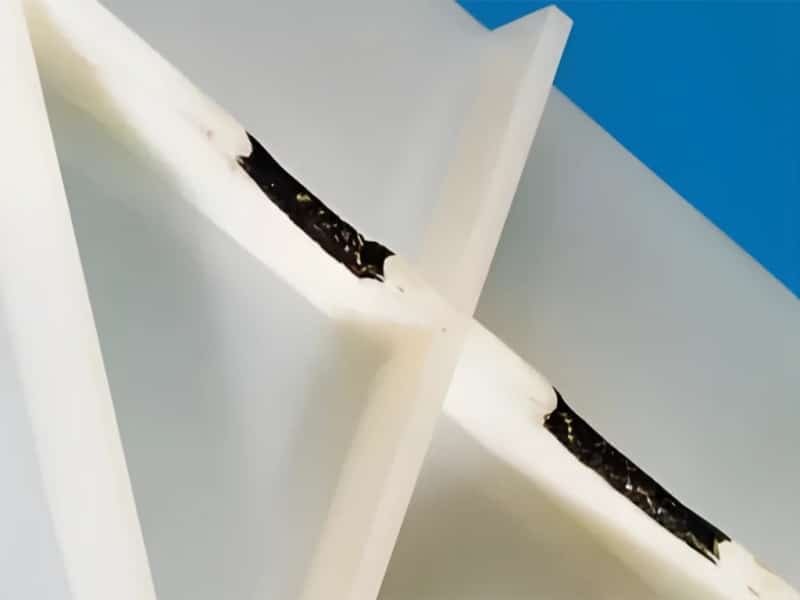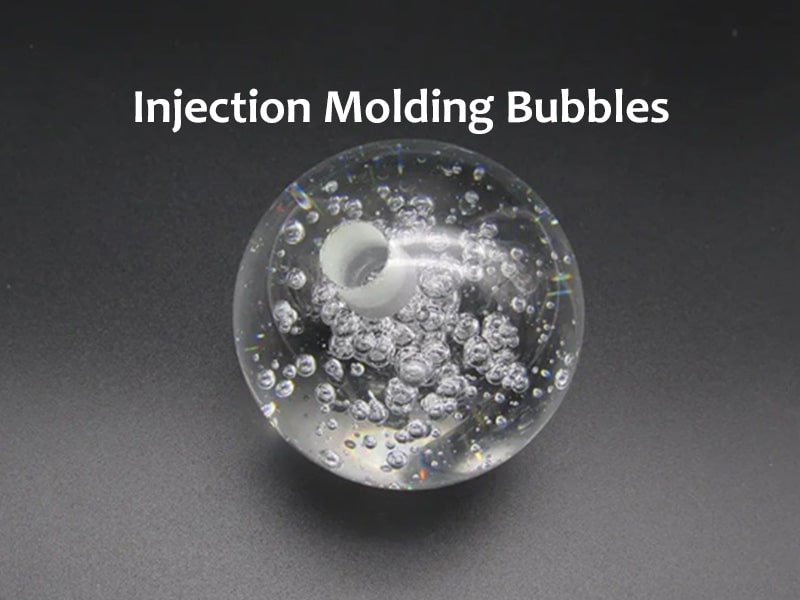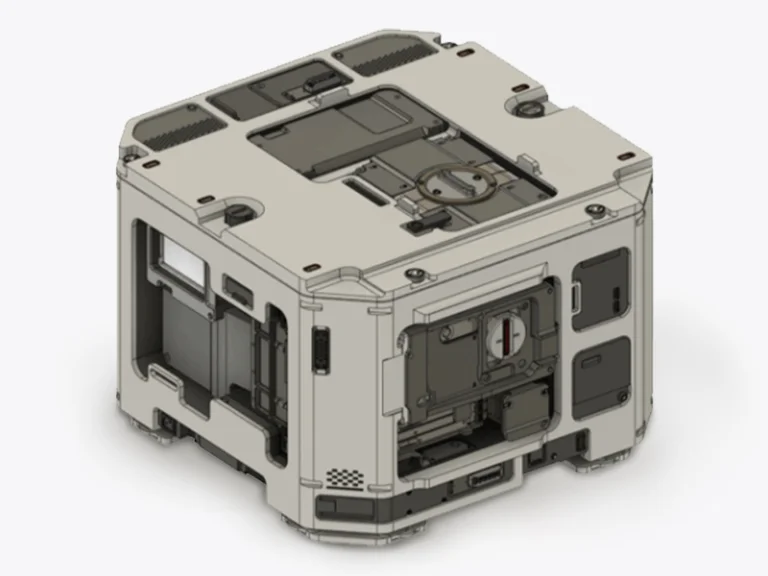Injection moulding burn marks are a persistent challenge in plastic manufacturing, leaving unsightly discolorations and compromising product quality. These defects often arise from trapped gases, excessive injection speeds, improper venting, or overheating of materials. How to aviod burn marks in injection molding? How to control burn marks in injection moulding? Understanding the root causes and implementing precise preventive measures can significantly reduce the occurrence of burn marks, leading to higher-quality molded parts and improved production efficiency. In this article, we delve into the most effective strategies to eliminate burn marks in injection molding, offering practical solutions to enhance manufacturing outcomes.

What Are Burn Marks in Injection Molding?
Burn marks in injection molding are discolorations or dark streaks that appear on the surface of molded plastic parts. These imperfections, often black, brown, or dark gray in color, typically occur near the venting areas, sharp corners, or thinner sections of the part. The burn mark in injection molding is a result of trapped air or gas overheating within the mold cavity, leading to oxidation or thermal degradation of the plastic material.
Visually, burn mark in injection moulding present as distinct scorch marks, streaks, or even small, charred spots that compromise the aesthetic quality and structural integrity of the finished product. These defects not only tarnish the appearance but may also weaken the material, making the product susceptible to fractures or brittleness under stress. Burn marks plastic injection molding issues are particularly problematic in applications requiring high visual standards or precision parts.
Causes of Injection Moulding Burn Marks
Burn marks in injection molding are typically caused by a combination of factors related to material behavior, process settings, and mold design.
Trapped Air and Gas Formation
One of the primary causes of burn mark injection molding issues is trapped air or gas within the mold cavity. During the injection process, molten plastic rapidly fills the cavity, compressing any residual air or gas. If this trapped air cannot escape efficiently, it becomes highly pressurized and heated, resulting in oxidation and the formation of burn marks.
Excessive Injection Speed and Pressure
Burn marks in injection molding often arise from excessive injection speed or pressure, which increases turbulence and causes air entrapment. When the molten plastic moves too rapidly, it fails to displace the air smoothly, leading to high-pressure pockets that heat up and oxidize, causing discoloration and streaks.
Improper Venting and Inadequate Gas Escape
Venting plays a critical role in preventing burn marks in injection molding. If the mold lacks sufficient venting channels or the existing vents are clogged or too narrow, gases become trapped, accumulating heat and eventually causing burn marks. Proper venting allows the gas to escape efficiently, avoiding the conditions that lead to scorching.
Overheating of the Material or Mold
Excessive heat during the molding process can cause the plastic material to decompose, generating gas that contributes to burn marks. High melt temperatures or poorly controlled mold temperatures can cause the polymer to degrade, producing dark marks or streaks on the surface of the molded part.
Decomposition of Plastic Material
Certain plastics are prone to thermal degradation when exposed to high temperatures for extended periods. This decomposition releases gases that become trapped within the mold cavity, forming burn marks. Material choice and thermal stability are crucial factors in minimizing these defects.

How to Prevent Burn Marks in Injection Molding
Preventing burn mark in injection molding requires meticulous attention to process parameters, material handling, and mold design. By implementing a combination of effective strategies, manufacturers can significantly reduce the occurrence of burn marks plastic injection molding defects.
Injection Molding Machine Parameters Setting
At the first, several machine-related adjustments can be made. Reducing the injection speed is crucial as it helps prevent turbulent flow conditions that can lead to burn marks. Additionally, maintaining a back pressure below 2 MPa is recommended to reduce excessive heat buildup. Proper purging of the barrel is also essential when changing materials or colors to avoid introducing burnt material into the mold.
Injection Mold Design Optimation
From a mold perspective, improving venting is vital. To ensure sufficient venting, molds should have vents that are at least 0.001 inches deep and 0.001 inches wide. These vents should be strategically placed at the end of the flow path where air is most likely to be trapped. Regularly inspect and clean these vents to prevent clogging. For optimal performance, consider using a combination of venting methods, such as using ejector pins with vented tips or incorporating vacuum venting systems to enhance air evacuation.
Material Selection
In terms of material selection, ensuring that materials are properly dried is critical. For most plastics, the moisture content should be below 0.2%. Choose materials with a low moisture absorption rate and a suitable melt index to minimize the risk of burn marks. For example, using materials with a melt index between 5 and 20 g/10 min can help achieve a stable flow without excessive shear heating.
Injection Molding Process Optimization
Finally, temperature control and process optimization are also key factors. Lowering the melt temperature can reduce heat-related defects. For instance, reducing the melt temperature by 10°C can significantly decrease the likelihood of injection molding burn mark. Additionally, using multi-stage injection molding can provide better control over fill rates and pressures, helping to reduce trapped air and prevent burn marks.

Common Issues Leading to Burn Marks and Solutions
Burn marks in injection molding are a common defect that can significantly impact product quality. These marks occur when air, resin, or gas becomes trapped and overheats during the molding process, leading to visible discolorations on the finished product. Here’s an overview of common issues leading to burn marks and potential solutions:
Common Issues Leading to Burn Marks
Trapped Air: Air trapped in the mold cavity can become compressed and heated, leading to combustion and burn marks. This is often due to inadequate venting in the mold.
High Injection Speed: Rapid injection speeds can prevent air from escaping, causing it to compress and heat up, resulting in burn marks.
Excessive Temperatures: High mold or material temperatures can lead to resin degradation and burn marks.
Moisture in Materials: Wet materials can cause steam expansion, leading to conditions conducive to burn marks.
Solutions to Prevent Burn Marks
Improve Venting: Ensure molds have sufficient vents to allow trapped air to escape. Regularly inspect and clean vents to prevent clogging.
Adjust Injection Speed: Lower the injection speed to allow air to escape more easily. Use fill rate controls to slow down the fill rate during the last stages of mold filling.
Optimize Temperatures: Maintain appropriate mold and material temperatures. Reduce melt temperatures if they are too high.
Dry Materials: Ensure materials are properly dried before use to prevent moisture-related issues.
Multi-Stage Injection: Implement multi-stage injection molding to better control fill rates and pressures, reducing the risk of trapped air.
Reduce Back Pressure: Keep back pressure below 2 MPa to minimize excessive heat buildup.
Here is a summary table to learn about the common issues leading to burn marks and solutions:
| Issue | Description | Solution(s) |
|---|---|---|
| Trapped Air | Air in the mold cavity is compressed, leading to combustion. | Improve venting, clean vents, use vacuum venting. |
| High Injection Speed | Rapid fill prevents air from escaping. | Reduce injection speed, optimize fill rate, use multi-stage injection. |
| Excessive Temperatures | High mold or melt temperatures cause material degradation. | Lower mold and melt temperatures, check heater band calibration, ensure proper cooling. |
| Moisture in Materials | Wet materials cause steam expansion and promote burning. | Dry materials thoroughly before use, store materials properly. |
| Excessive Back Pressure | High back pressure causes material overheating. | Reduce back pressure. |
| Poor Material Selection | Material is unstable or prone to degradation at molding temperatures. | Select more stable material, check material data sheets for recommended processing temperatures. |
| Inadequate Mold Design | Flow paths promote air trapping, or cooling is insufficient. | Redesign mold with improved flow and venting, optimize cooling channels. |
Conclusion
Burn marks in injection molding are a common yet preventable defect that can significantly affect product quality and performance. By implementing precise control measures, including proper mold venting, optimized injection speed and pressure, material selection, and thorough drying procedures, manufacturers can effectively minimize burn marks. Additionally, maintaining consistent mold temperatures and performing regular maintenance are essential to sustaining optimal production conditions. Adopting advanced process monitoring and utilizing appropriate additives can further enhance process stability, ensuring consistent and defect-free production. Through careful planning and meticulous execution, manufacturers can achieve high-quality molded parts while reducing waste and operational costs.



